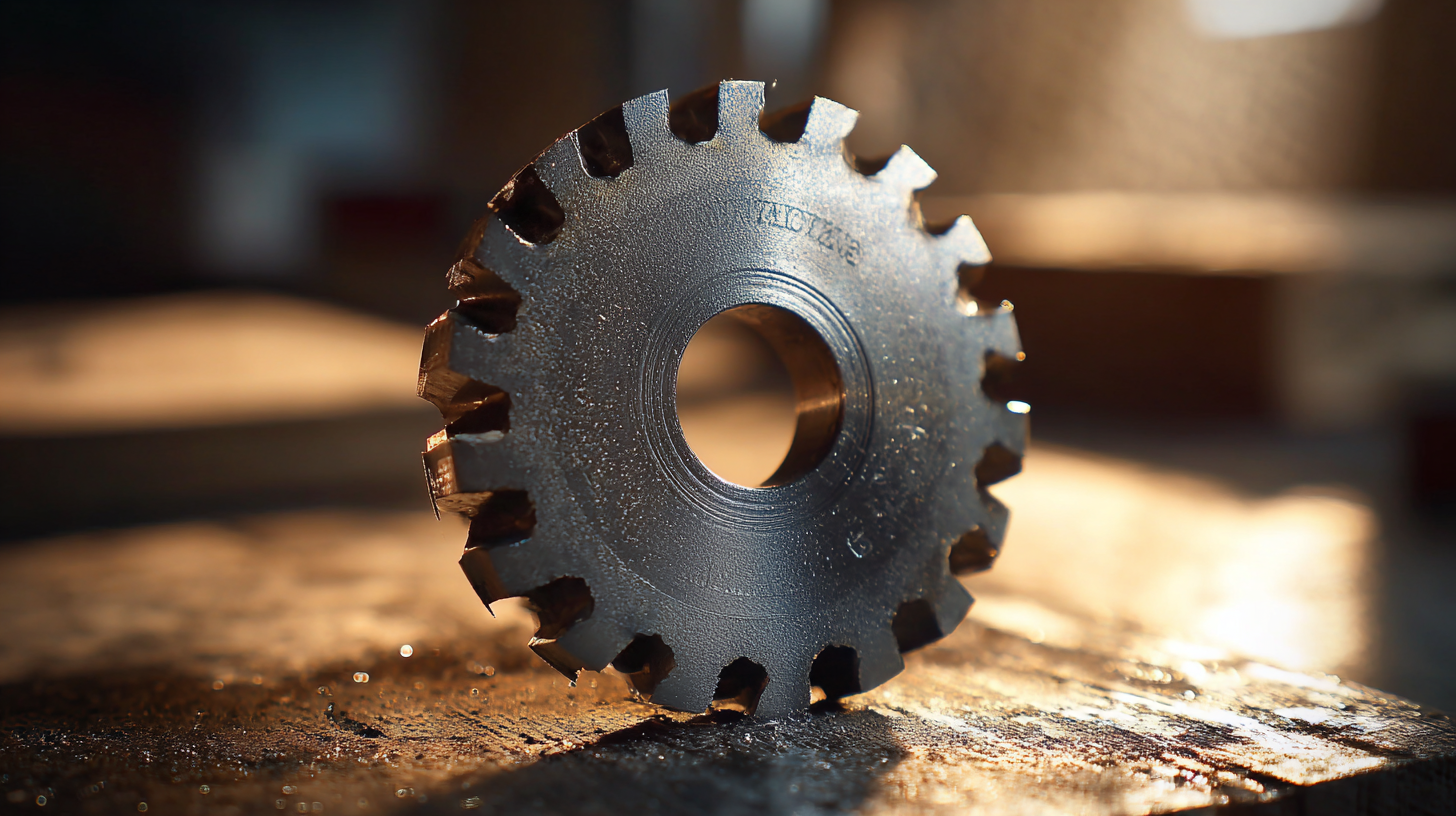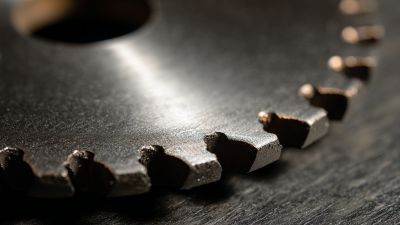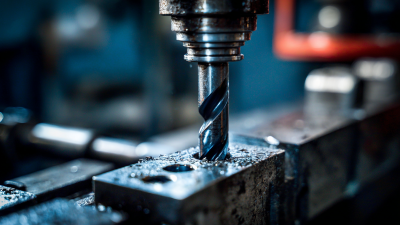In the realm of modern engineering, the Steel Hole Saw has emerged as an indispensable tool that significantly enhances efficiency and precision in various applications. These specialized cutting tools are designed to create smooth, circular holes in a wide range of materials, including wood, metal, and plastics. The versatility of Steel Hole Saws makes them a preferred choice for professionals in construction, manufacturing, and even DIY projects. Moreover, their ability to produce consistent hole sizes with minimal effort contributes to improved project timelines and overall quality of workmanship.

With advancements in manufacturing technology, Steel Hole Saws have also been optimized for durability and performance, ensuring that they can withstand the demands of rigorous use. This exploration of the function and importance of Steel Hole Saws in contemporary engineering will shed light on their role in enhancing productivity and achieving precision in various tasks.
In the realm of precision engineering, steel hole saws play an indispensable role by enabling the creation of accurate and clean holes in a variety of materials. According to a report by Allied Market Research, the global market for hole saws is projected to reach $1.1 billion by 2026, driven largely by their application in sectors such as construction, automotive, and aerospace. The robust design of steel hole saws allows for high-performance cutting, reducing the risks of material damage and ensuring precision in manufactured parts.
The effectiveness of a steel hole saw is often measured by its tooth geometry and material composition, which are critical for achieving optimal cutting speeds and geometrical accuracy. Research published by the Journal of Manufacturing Science and Engineering indicates that advancements in carbide-tipped hole saw technology have improved cutting life by as much as 40%. This improvement is vital in precision engineering applications where tolerances are tight, and the cost of rework can be significant. Thus, the utilization of steel hole saws not only enhances efficiency but also ensures that specifications are met with minimal variation in hole dimensions across production runs.
 Steel hole saws play a crucial role in modern engineering, primarily due to the unique material properties of steel that enhance their efficiency and performance. Steel's high tensile strength allows for the creation of durable cutting edges that can withstand the stresses of drilling through various materials, from hardwood to metal. Moreover, steel's resilience ensures that hole saws maintain their shape and sharpness over extended periods, reducing the frequency of replacements and providing a cost-effective solution for contractors and engineers alike.
Steel hole saws play a crucial role in modern engineering, primarily due to the unique material properties of steel that enhance their efficiency and performance. Steel's high tensile strength allows for the creation of durable cutting edges that can withstand the stresses of drilling through various materials, from hardwood to metal. Moreover, steel's resilience ensures that hole saws maintain their shape and sharpness over extended periods, reducing the frequency of replacements and providing a cost-effective solution for contractors and engineers alike.
When utilizing steel hole saws, it’s important to choose the right type of steel for specific applications. High-speed steel (HSS) hole saws, for instance, are known for their ability to endure high temperatures and deliver precise cuts, making them ideal for metals. Conversely, bi-metal hole saws combine HSS teeth with a softer steel body, offering flexibility and durability, which is particularly beneficial when cutting through tougher materials.
Tips: Always lubricate the hole saw during use to minimize friction and heat buildup, which can damage both the tool and the workpiece. Additionally, ensure you maintain a steady speed and pressure, as this will improve the lifespan of your hole saw and the quality of the cut.
 Steel hole saws play a crucial role in modern engineering, particularly in industrial applications where precision and durability are essential. Their cutting performance and lifespan are key factors that determine their effectiveness in various engineering projects. The cutting performance of steel hole saws is influenced by material type, tooth design, and operational speed, allowing them to efficiently bore through different materials, including steel, wood, and plastics.
Steel hole saws play a crucial role in modern engineering, particularly in industrial applications where precision and durability are essential. Their cutting performance and lifespan are key factors that determine their effectiveness in various engineering projects. The cutting performance of steel hole saws is influenced by material type, tooth design, and operational speed, allowing them to efficiently bore through different materials, including steel, wood, and plastics.
Tips: When selecting a steel hole saw, consider the material you are working with and the required diameter for your project. Match the tooth design to the material to optimize cutting efficiency.
Moreover, the lifespan of these tools can vary significantly based on usage conditions and maintenance practices. Regular lubrication and proper cooling during operation can extend the lifespan of steel hole saws, reducing costs and improving overall productivity.
Tips: Always maintain your tools by cleaning them after use and inspecting for any wear and tear that might affect their performance. Keeping an inventory of commonly used sizes can also streamline your workflow.
Steel hole saws play a crucial role in modern engineering, especially when compared to other hole cutting tools. The advent of advanced hole saw designs, such as those utilizing bi-metal and carbide technologies, significantly enhances cutting efficiency and durability. For instance, a recent study highlighted that a new three-tooth-per-inch (TPI) design in hole saws can deliver faster cuts while maintaining the toughness characteristic of bi-metal saws, aligning with the growing demand for productivity in various industries.
In a comparative analysis, it is essential to observe the applications of carbide reciprocating saw blades, which offer expanded capabilities for cutting different materials. Research indicates that the use of advanced coated high-speed steel tools enhances machining quality, resulting in improved hole precision in materials like Al-Si alloys under high cutting speeds. These innovations suggest that while steel hole saws remain integral to drilling, there is a notable shift towards specialized saws that cater to specific material properties, thereby optimizing performance in engineering tasks.
When selecting steel hole saws for modern engineering projects, it is crucial to consider several best practices to ensure efficiency and precision. First, understanding the material compatibility is essential. For instance, data from the Metal Cutting Institute indicates that carbide-tipped hole saws provide significantly better performance when drilling through harder materials like stainless steel, resulting in a 30% increase in tool life compared to traditional bi-metal saws. Choosing the right tooth configuration also plays a vital role; a finer tooth count is better suited for smoother cuts in thinner materials, while a coarser tooth count is effective for quicker removal in thicker substrates.
In addition to selecting the appropriate saw, using the correct drilling techniques can greatly impact the project's success. The American Machinist Association suggests employing a slower feed rate and appropriate lubrication to reduce friction and heat, which can lead to premature wear. Furthermore, consistent monitoring of the saw's performance is recommended, as studies show that replacing worn-out hole saws in a timely manner can prevent costly delays and ensure continued precision in engineering tasks. By adhering to these best practices, engineers can optimize their projects and achieve superior results.
| Dimension | Detail | Best Practices |
|---|---|---|
| Material Type | High-speed steel (HSS) | Select based on durability and project requirements |
| Diameter Size | Various sizes from 14mm to 127mm | Choose size according to hole requirements |
| Tooth Design | Variable pitch teeth | Optimize for specific material types |
| Cutting Speed | Recommended speed: 200-300 RPM | Adjust speed based on material and desired finish |
| Lubrication | Cooling lubricant recommended | Use to reduce friction and prolong tool life |
| Application | Wood, metal, plastic | Select hole saw based on material compatibility |







